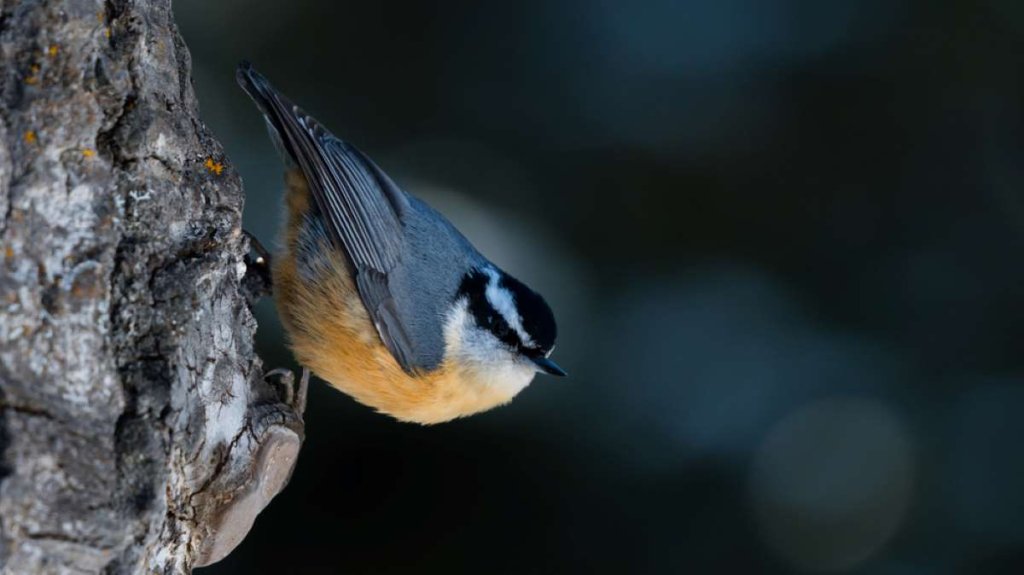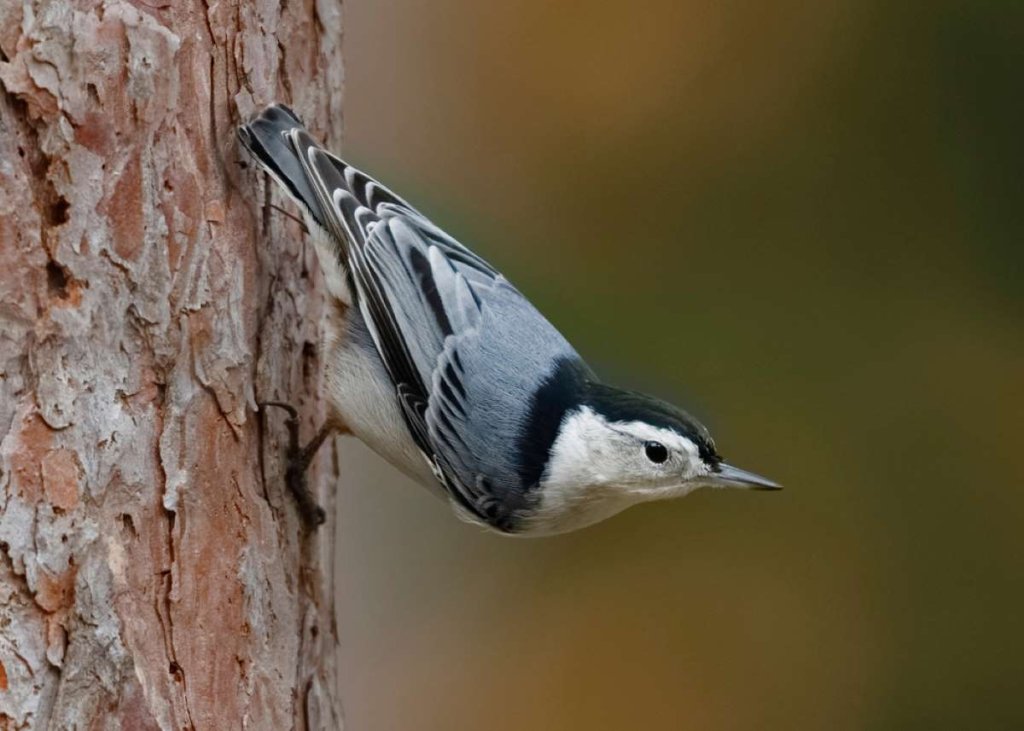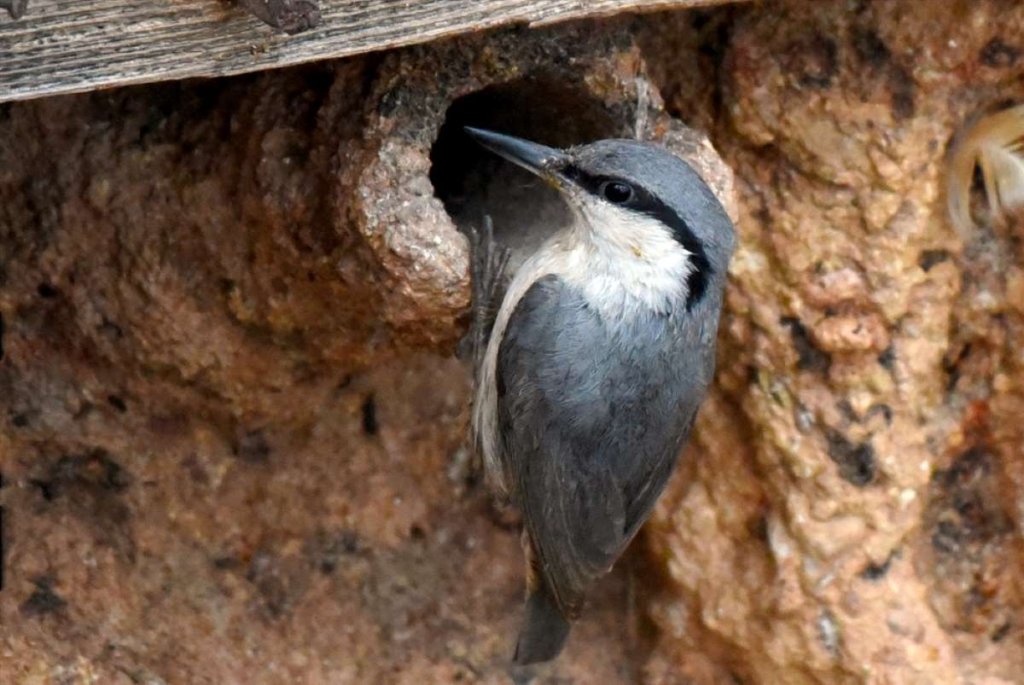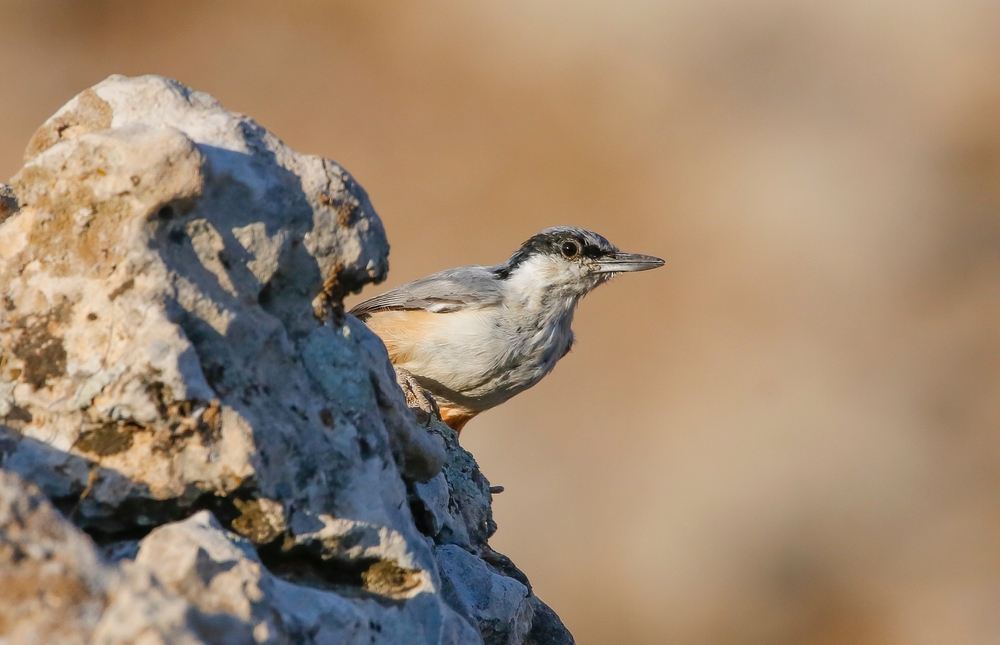The White Breasted-Nuthatch and the Red-Breasted Nuthatch nest in most regions of North America. Western Nuthatches make nests in the cavities of trees in dense coniferous forests. Eastern Nuthatches live in deciduous forests in the thick shade trees and orchards.
No matter where you in fact live in North America, there is likely a family of Nuthatches nearby if you know when and where to look. Western Nuthatches nest in a variety of trees such as spruce, pine, hemlock, western red cedar, and fir trees.
Have you ever wondered where Nuthatches make their nests during the breeding season? They use their sharp beaks to excavate holes in dead trees for ultimate protection and sometimes even reuse old Woodpecker nests!
Where Do Nuthatches Like To Nest?
The Red and White-Breasted Nuthatch (Sitta carolinensis) is a cavity-dwelling bird similar to a Woodpecker or a Chickadee. They find natural cavities and crevices in dead trees and build their nest inside. With their razor-sharp beaks, they can widen the entrance hole to their nest to make it wide enough to raise their young. In some cases, Nuthatches reuse old Woodpecker holes for their nesting sites.
While the female Nuthatch often excavates the nest and builds inside, the male sometimes takes an active role in this process. Unmated males will excavate several holes in nearby trees to attract a mate. If the male is mated, the female takes over the responsivity of building the nest.

What Do Nuthatch Nests Look Like?
Nuthatch nests are hard to spot because they are found inside tree trunk cavities and crevices. Hidden Nuthatch homes are difficult to spot, but they provide ultimate protection from predators. Inside the tree cavity, the female Red-Breasted Nuthatch constructs a nest cavity made from materials such as pine needles, clumps of dirt, and grasses. The inside of the small cup is made from softer materials such as animal fur, fine grasses, and feathers.
Eggs, Incubation, and Nestlings
Every mating season, the Red-Breasted and White-Breasted Nuthatch raises only one brood of wild birds per season. The female Nuthatch lays one egg daily and can lay as many as nine eggs in a single clutch. The average clutch size is seven eggs. Nuthatch eggs are tiny and have an off-white to creamy pink coloring with brown, gray, or purple specks.
The Nuthatch eggs require an incubation period of up to 14 days. While the female sits on the nest, the male helps out by bringing her food. When the young birds hatch, they remain in the nest for up to 26 days.
Once the baby birds hatch, both parents take an active role in raising and feeding their young. These small birds eat a protein-rich insect diet of bugs such as caterpillars, spiders, and larvae before they leave the nest and become fledglings.

Do Nuthatches Use Birdhouses?
Some Nuthatches will utilize a homemade birdhouse, but not all. If you want to attract Nutchatches to your backyard space, the White-Breasted Nuthatch is more likely to use a nesting box over a Red-Breasted Nuthatch. Since the White-Breasted Nuthatch is often a year-round resident in North America, they are likely to become permanent residents in areas with plenty of nesting boxes, hollow trees, birdbaths, and birdfeeders.
While Red-Breasted Nuthatches are unlikely to use a nesting box, they are attracted to areas with plenty of natural places to nest, such as dead trees. Keep a few things in mind if you want to make your Nuthatch birdhouse. Firstly, ensure that you opt for a nesting box that doesn’t have a perch.
Nuthatches roost upside-down outside their natural cavities and have no use for perches. Perches make it easier for predators to slink inside the nest. While it’s not common for Nuthatches to use nesting boxes, placing them in the right location near a tree is a great way to entice these wild birds to flock to your backyard space this breeding season.

How Can I Attract Nuthatches To My Backyard?
Nuthatches are sometimes short-distance migratory birds traveling to areas with abundant food sources. The Red-Breasted Nuthatch, for instance, spends its breeding season in Canada and migrates south to portions of North America in search of food in its wintering grounds. Knowing what they like to eat is critical to attracting these elusive backyard wild birds to your backyard.
During breeding season, these North American birds eat a diet rich in insects and switch to seeds, acorns, sunflower seeds, and nuts when the temperatures plummet. Suet feeders are a great option to provide these songbirds nutrition during the cold winter months. They offer these cold-weather birds healthy fat, and mealworm suet is an excellent choice for much-needed protein.

